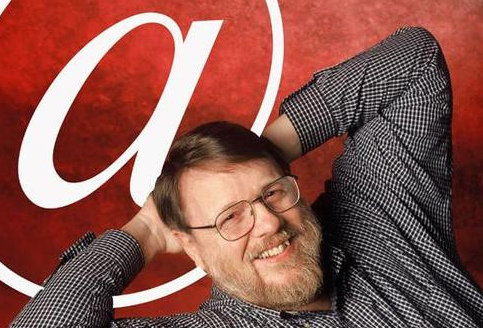
Ray Tomlinson invented the system for sending electronic messages between networks back in 1971 while working for Boston-based tech firm BBN Technologies.
A graduate of Rensselaer Polytechnic Institute and MIT, Tomlinson’s program enabled messages to be sent between computers connected to ARPANET, the government research network that was the forerunner to the Internet we know today.
With his invention, the New York-born electrical engineer not only changed forever the way we communicate, but also rescued the “@” sign from relative obscurity, a fact noted by Gmail in a tribute tweet posted on Monday.
Thank you, Ray Tomlinson, for inventing email and putting the @ sign on the map. #RIP
— Gmail (@gmail) March 6, 2016
“Thank you, Ray Tomlinson, for inventing email and putting the @ sign on the map,” the tweet said.
The “@” sign
Recognizing its importance, the Museum of Modern Art (MoMA) added the “@” sign to its collection in 2010. The museum said that in 1971, “@” was little more than “an underused jargon symbol lingering on the keyboard and marred by a very limited register.”
However, by October that year, Tomlinson (pictured) had successfully “imbued it with new meaning….elevating it to ‘defining symbol of the computer age.'”
He reportedly chose the symbol because it turned an email address into a phrase (he called it “the only preposition on the keyboard”) and, more simply, because “it was already there, on the keyboard, and nobody ever used it.”
MoMA said that by choosing the symbol, Tomlinson had “performed a powerful act of design that not only forever changed the @ sign’s significance and function,” but also made it “an important part of our identity in relationship and communication with others.”
But his invention wasn’t simply all about the “@” symbol. According to the Internet Society, which inducted Tomlinson into the Internet Hall of Fame in 2010, he was also a key player in the development of the structure of the email system, “including defining a place to put inbound email on the user’s machine, developing a mail transport agent to move email between machines, creating a protocol for moving email between machines, setting a standard format for email messages, and designing a tool for creating and reading email.”
First ever email
So, what was in the first email ever sent? Speaking in an NPR interview in 2009, Tomlinson confessed that he couldn’t actually remember.
“Everybody asks that but of course I don’t remember every single word of it,” the engineer said. “The main thing is there were lots of test messages – these things don’t work out of the box because there was no box. Every time you test you have to generate some kind of a message and you might drag your fingers across the keyboard or just type the opening phrase from Lincoln’s Gettysburg Address or something else, so technically the first email was completely forgettable and therefore forgotten.” Tomlinson, on the other hand, won’t be.



